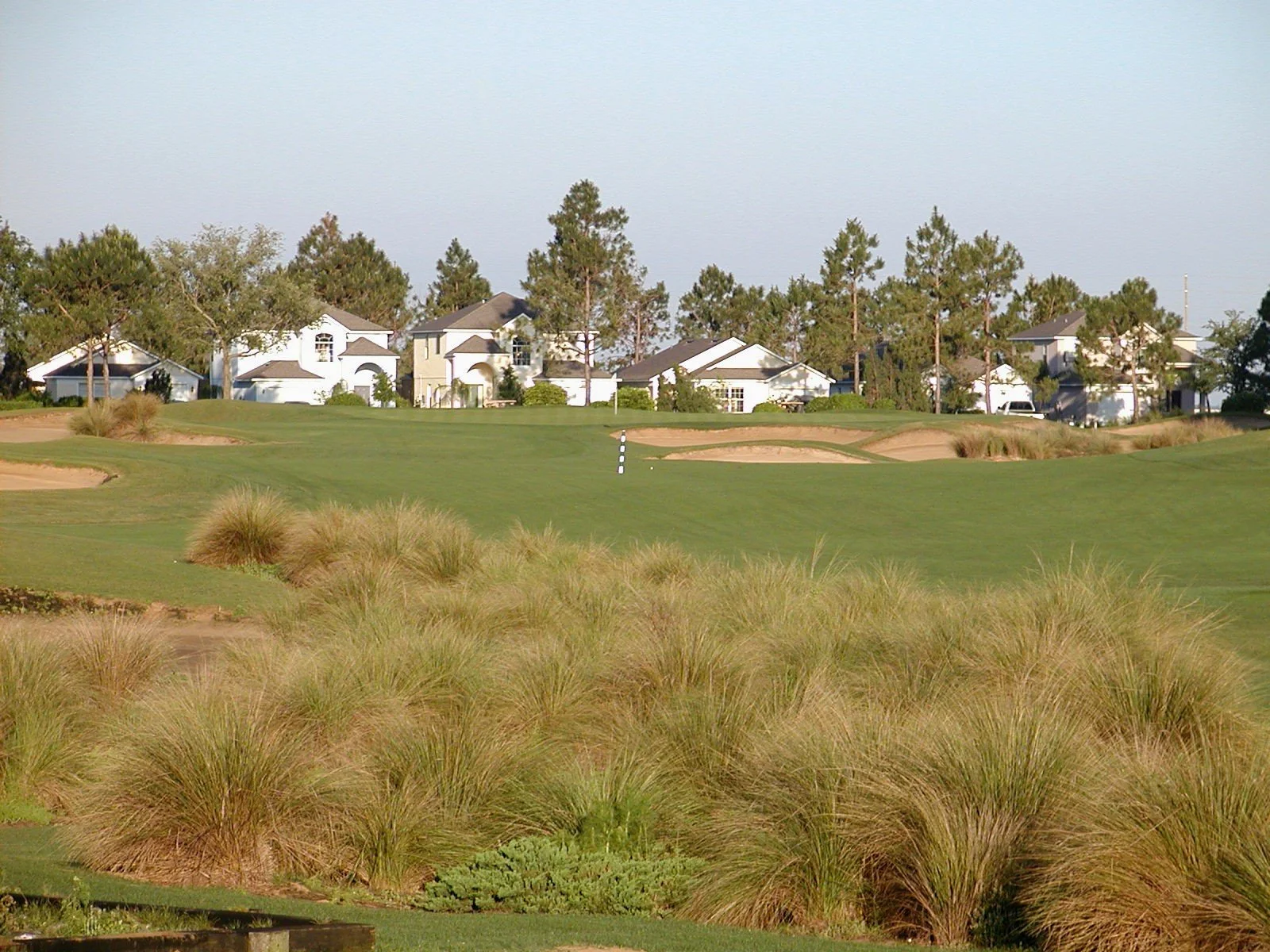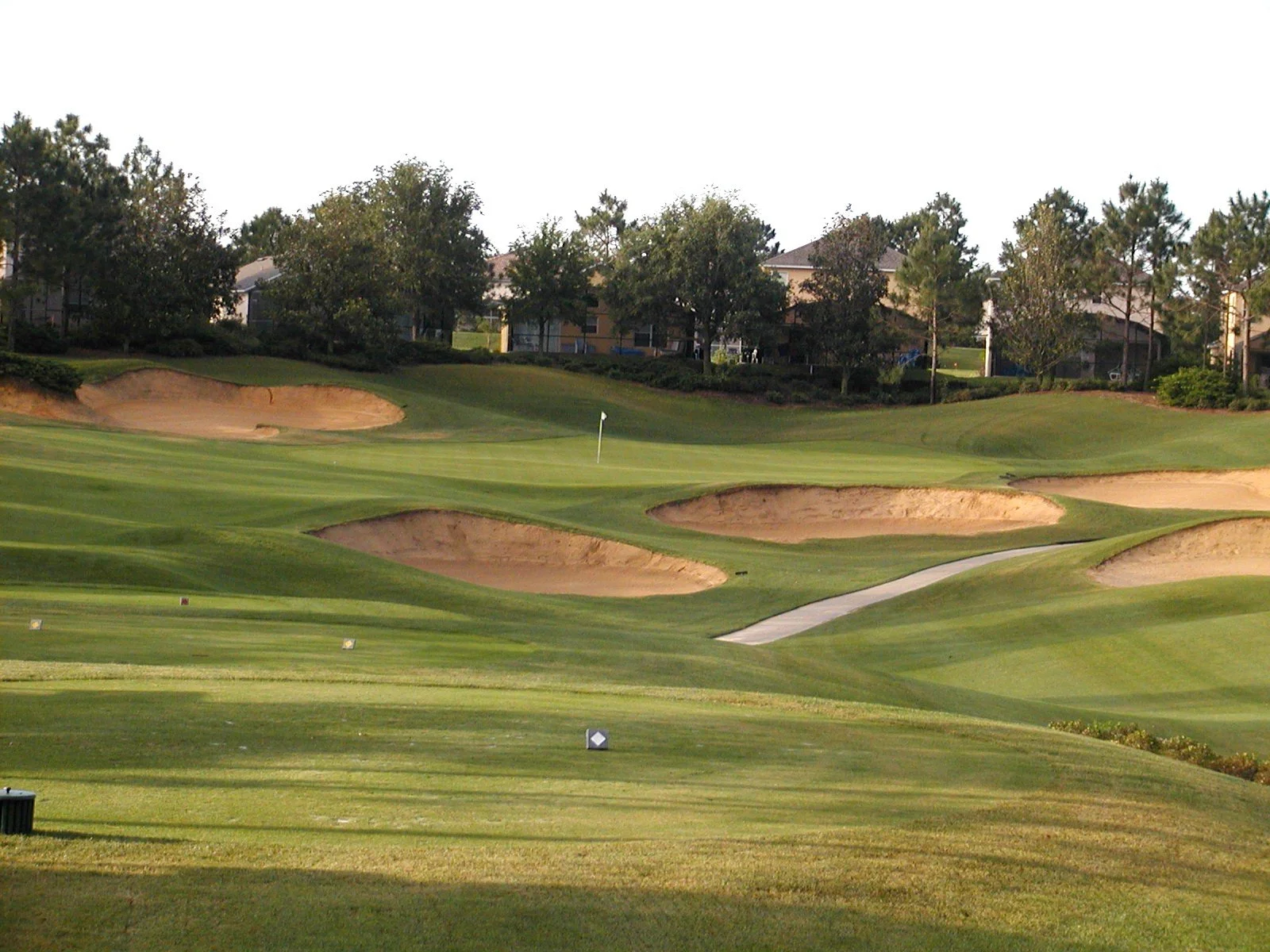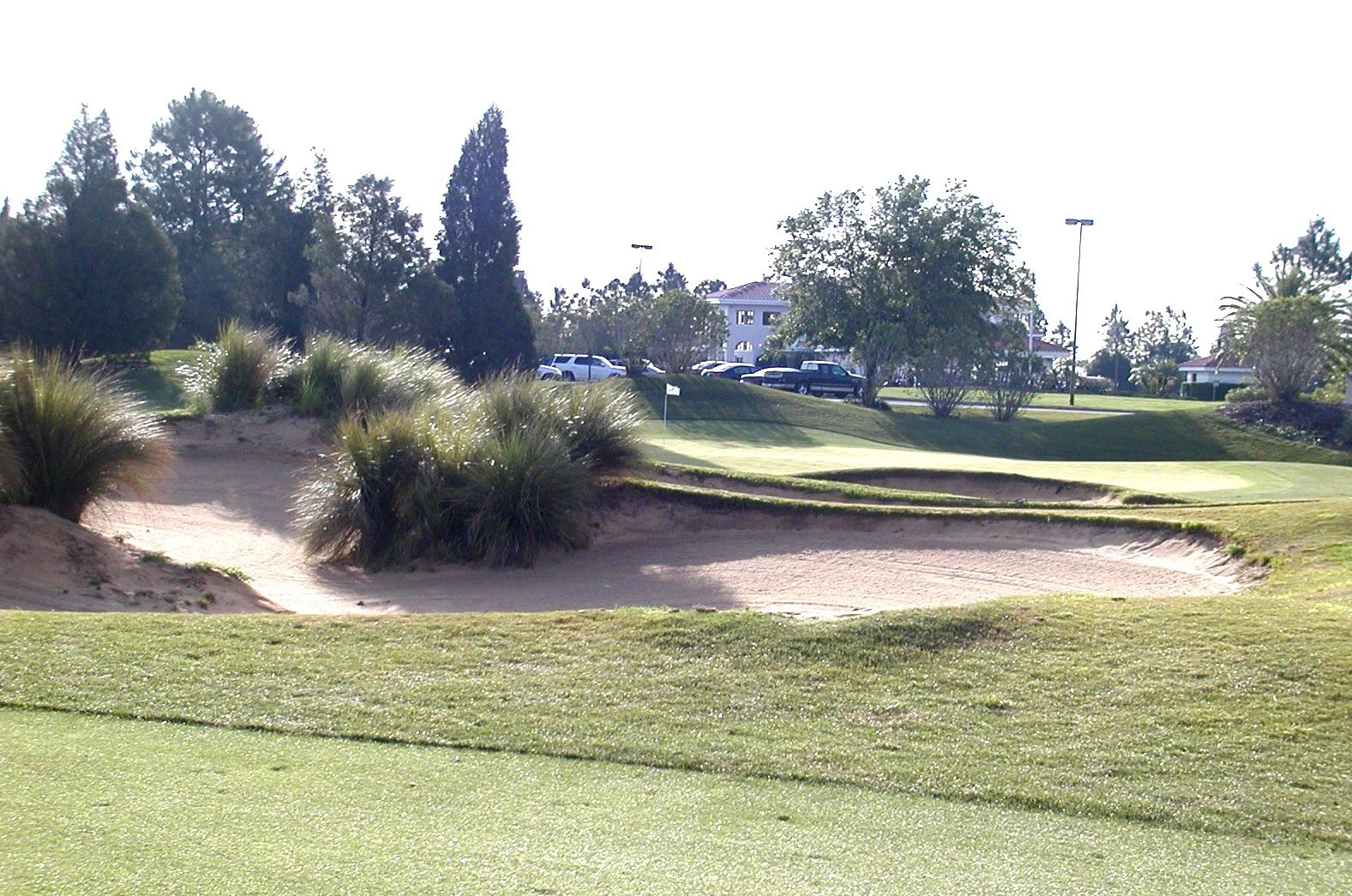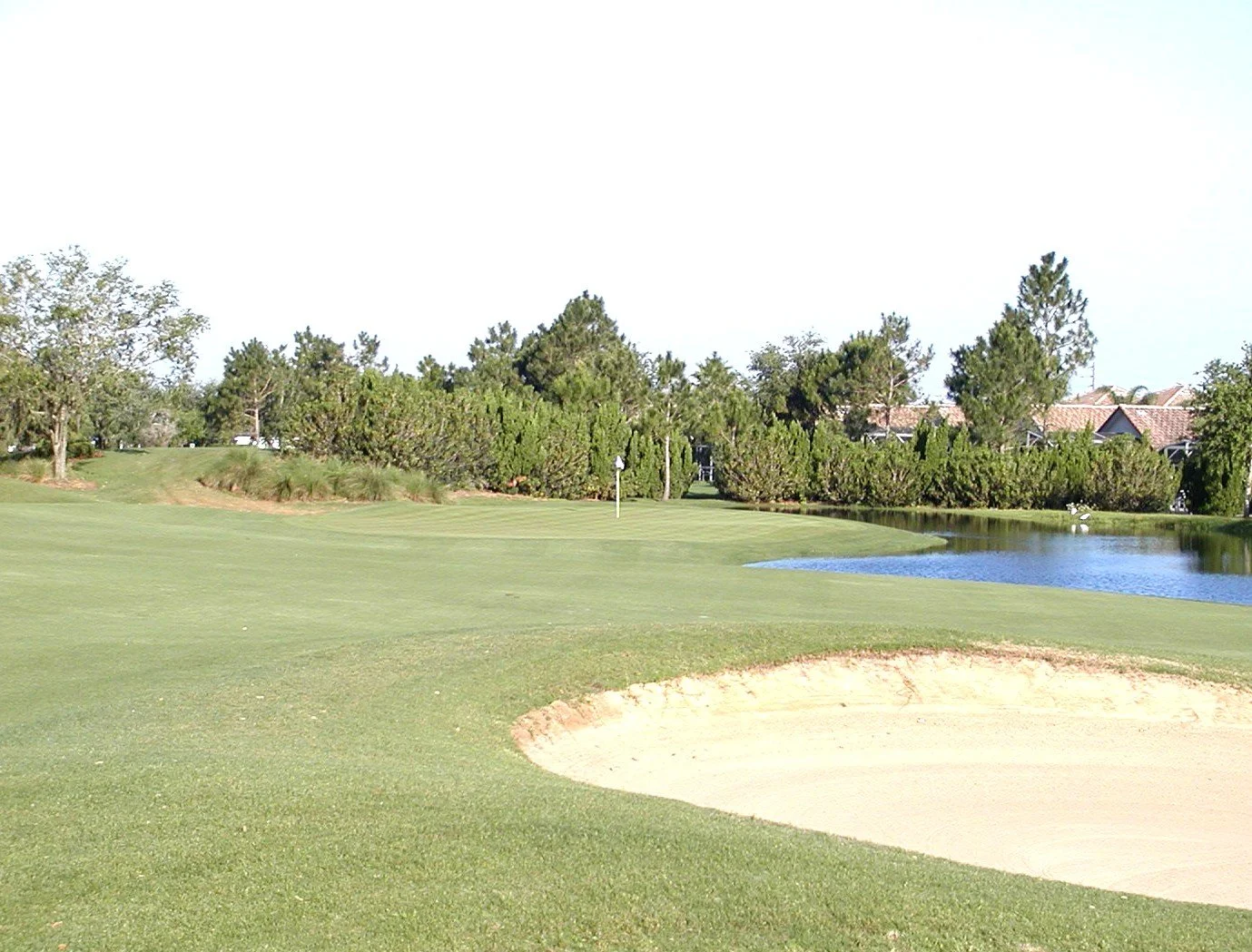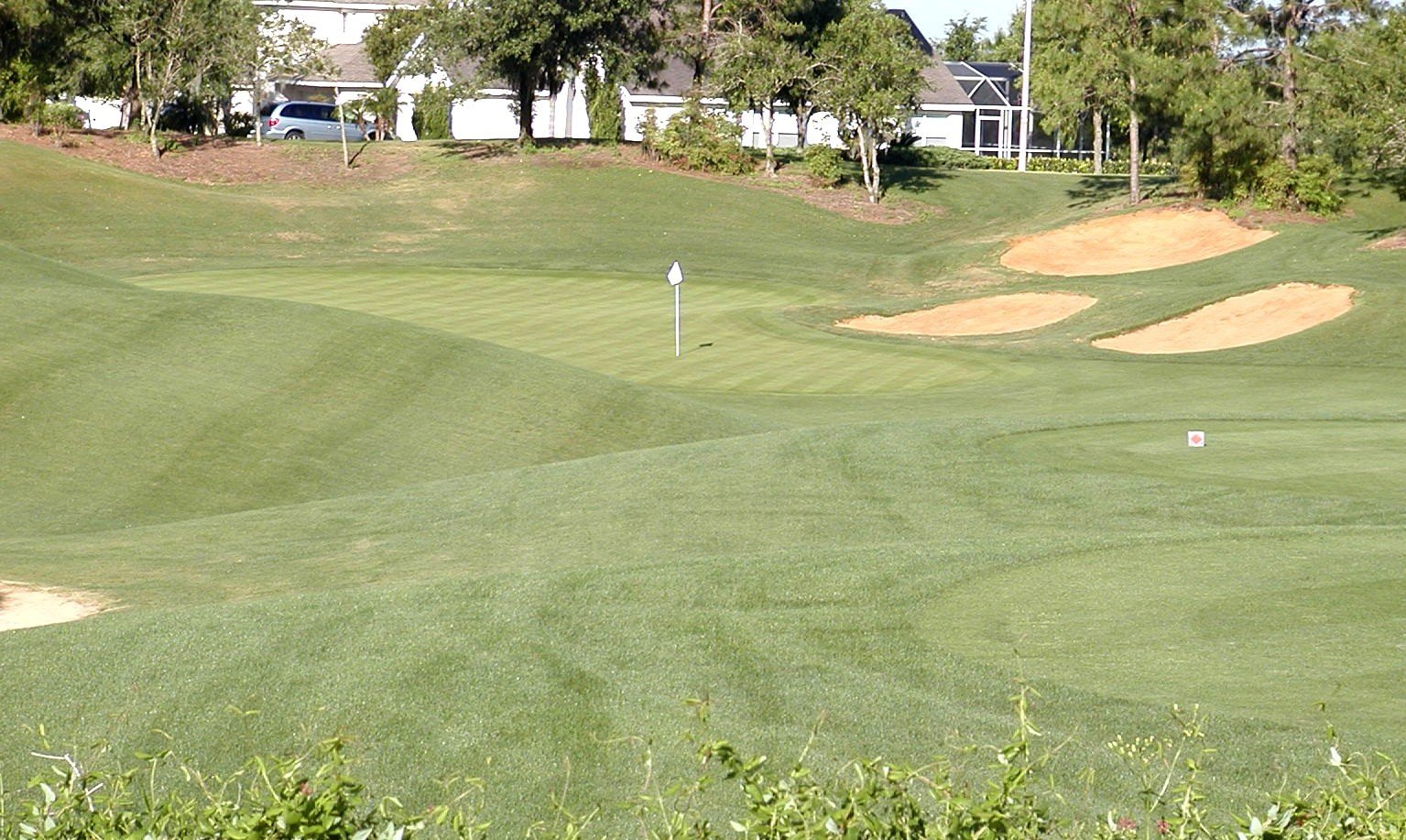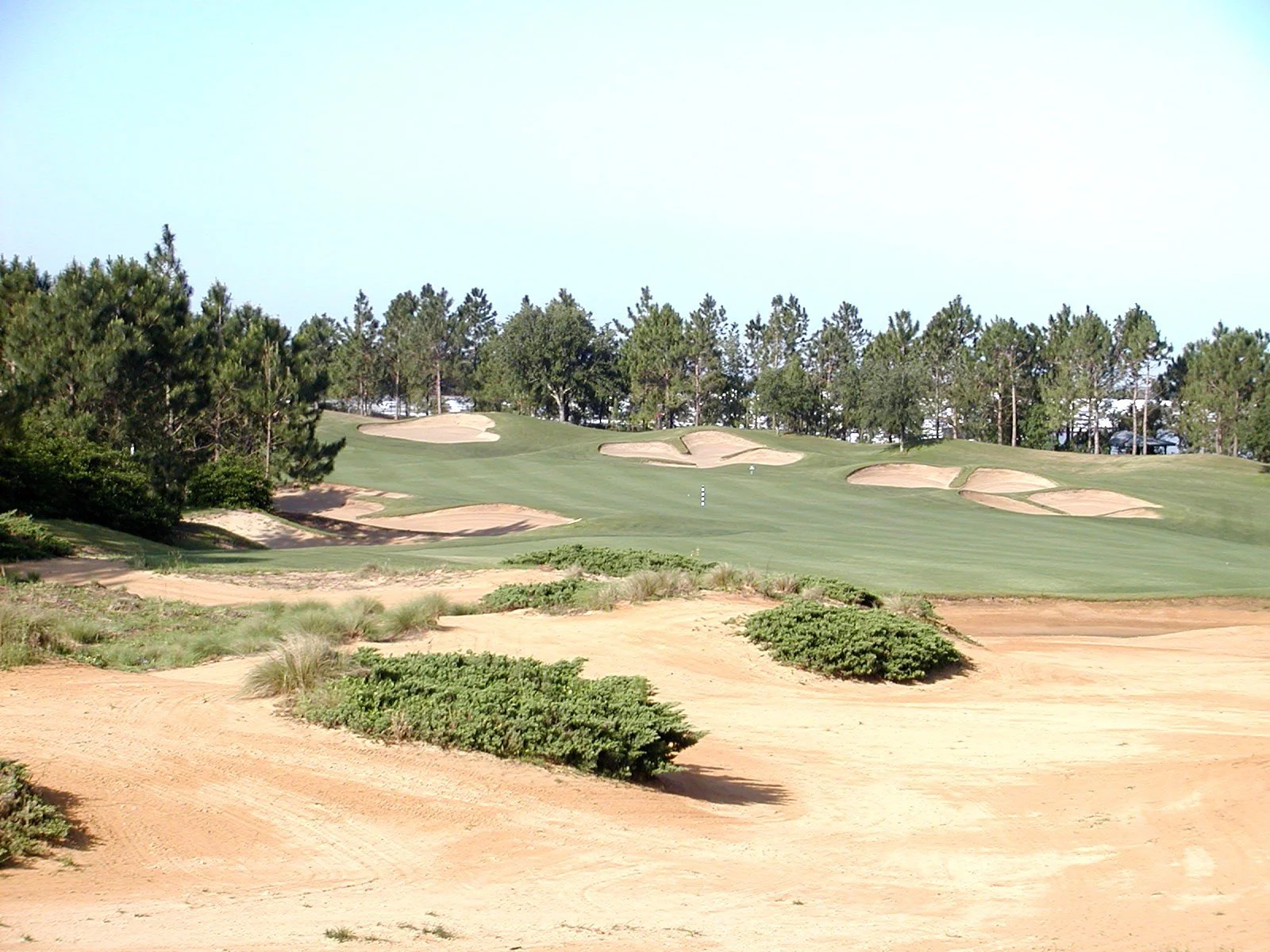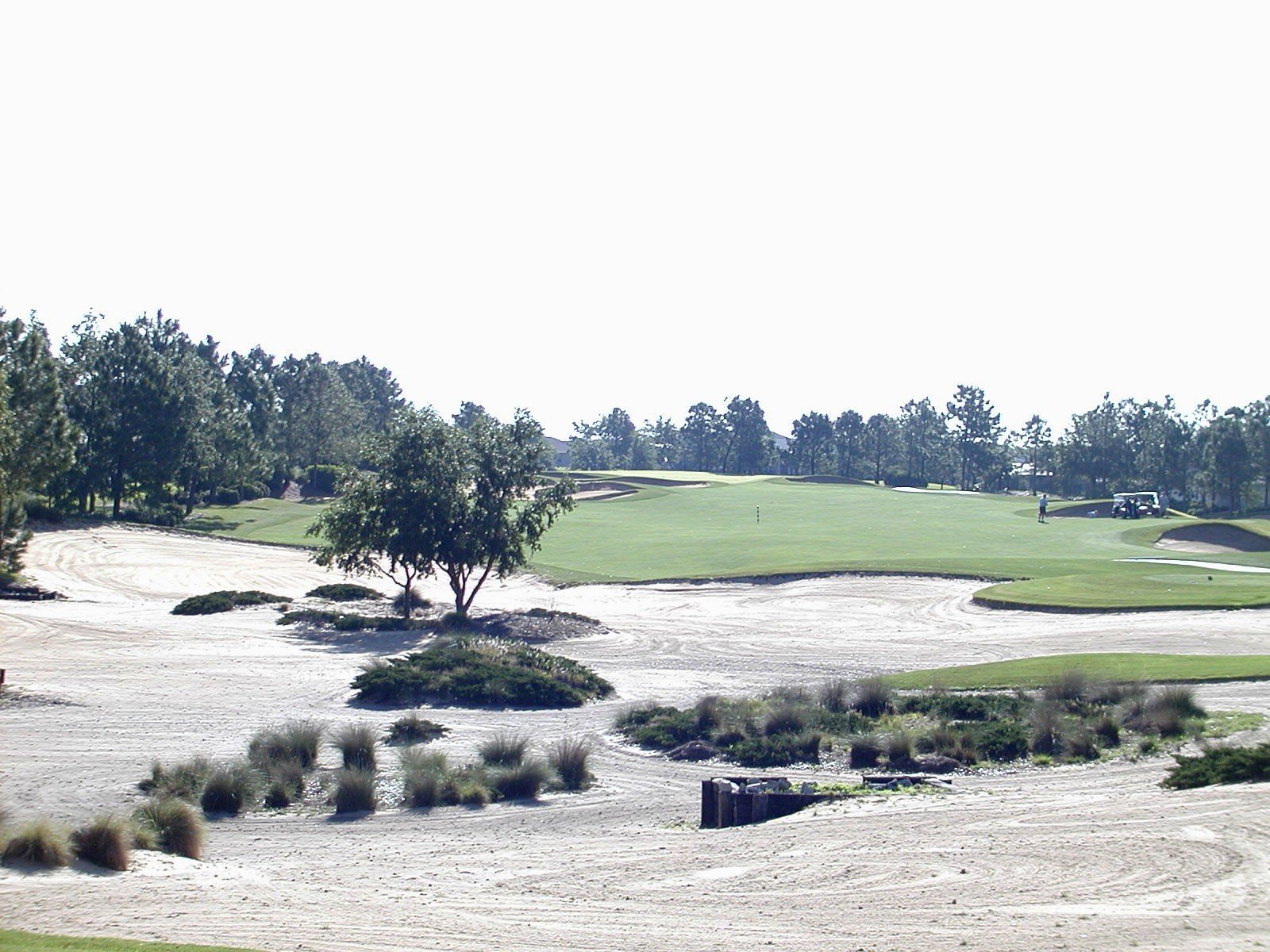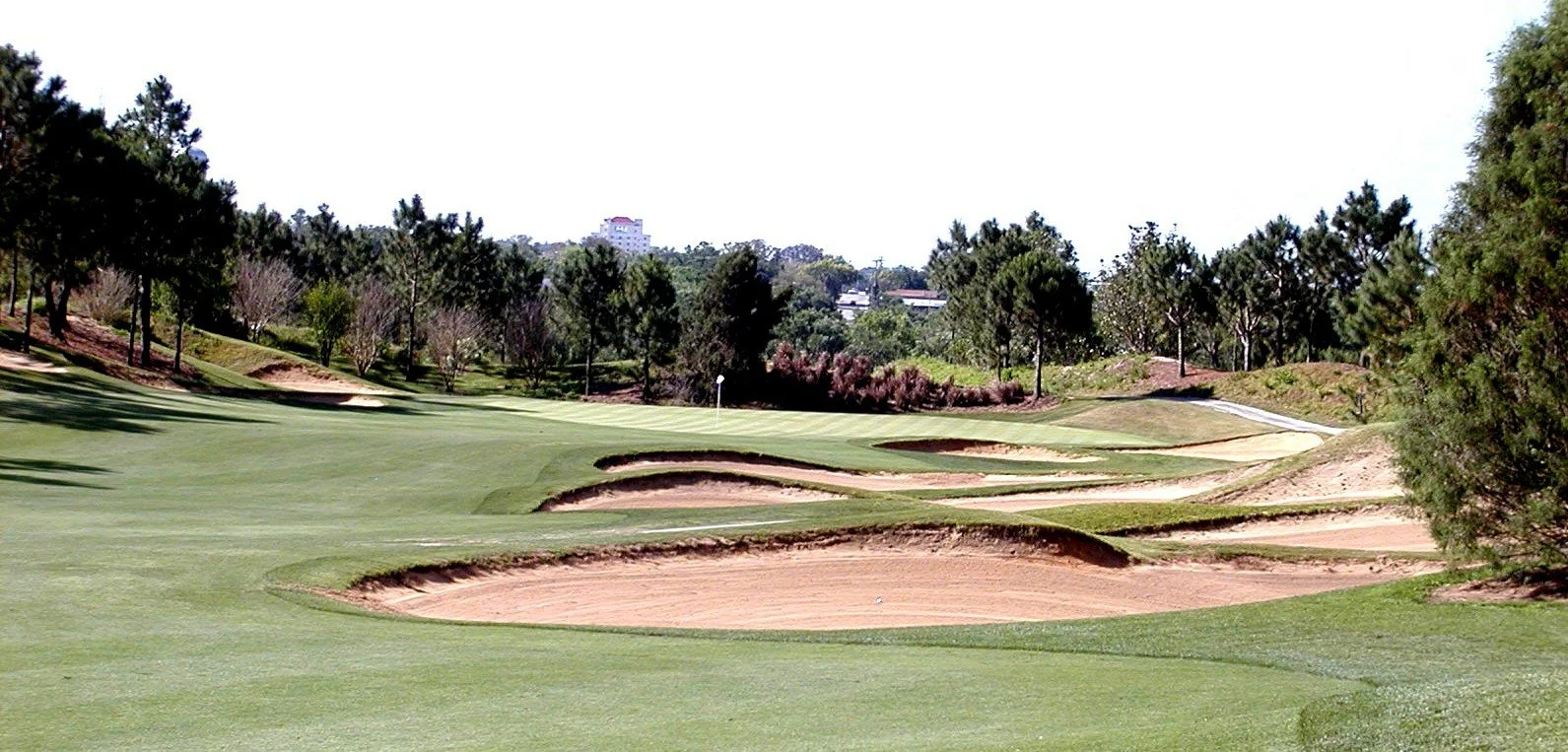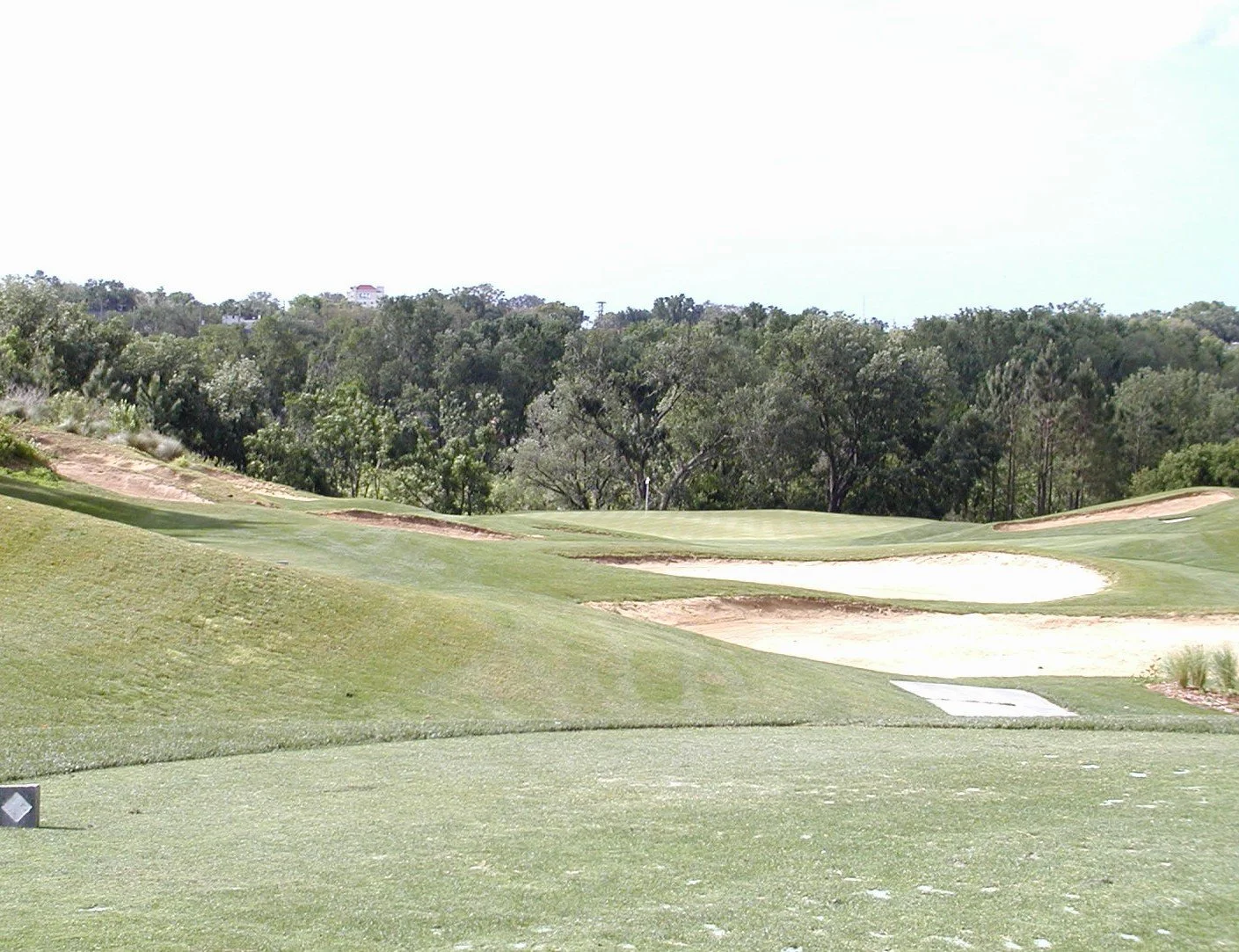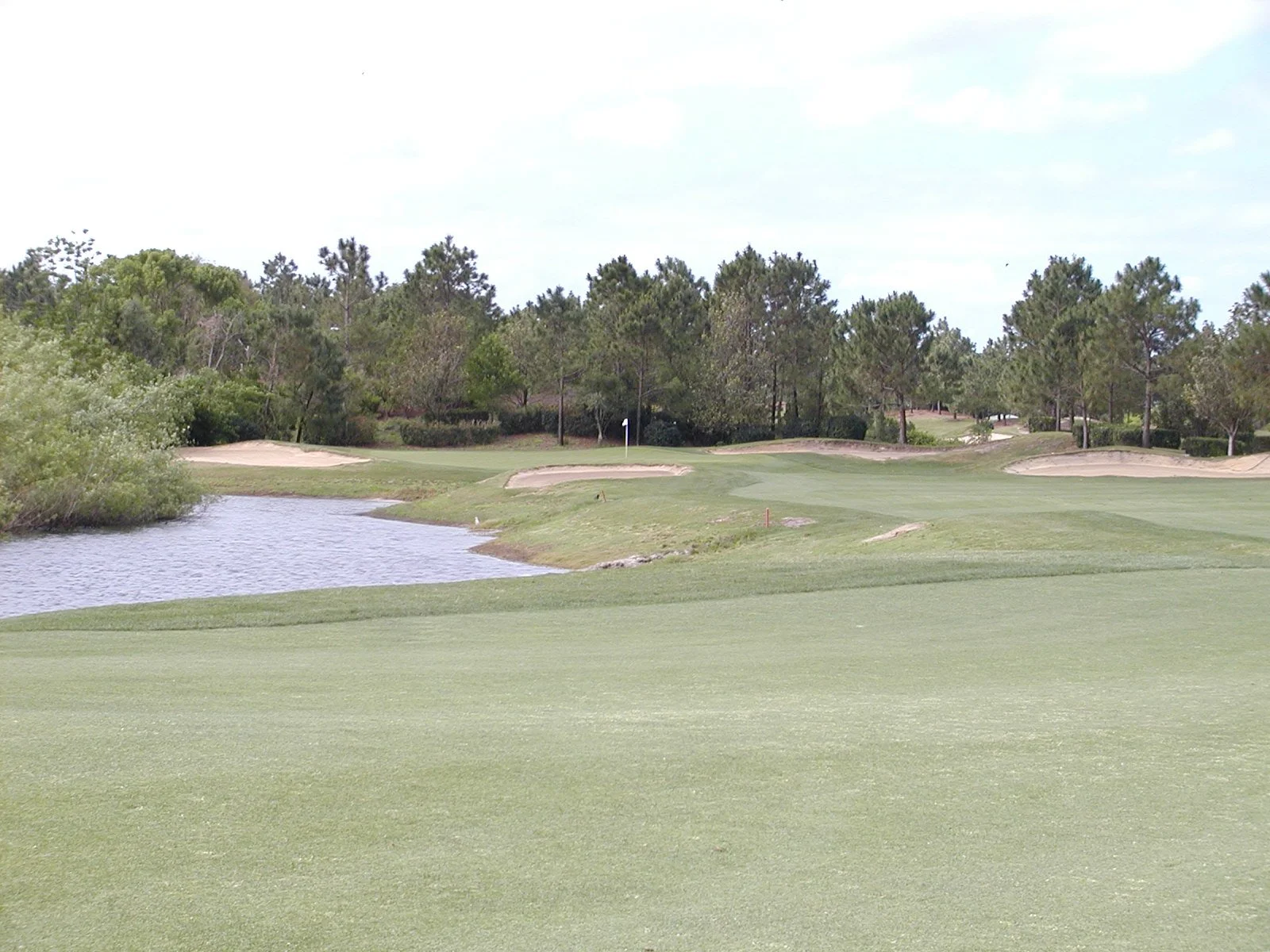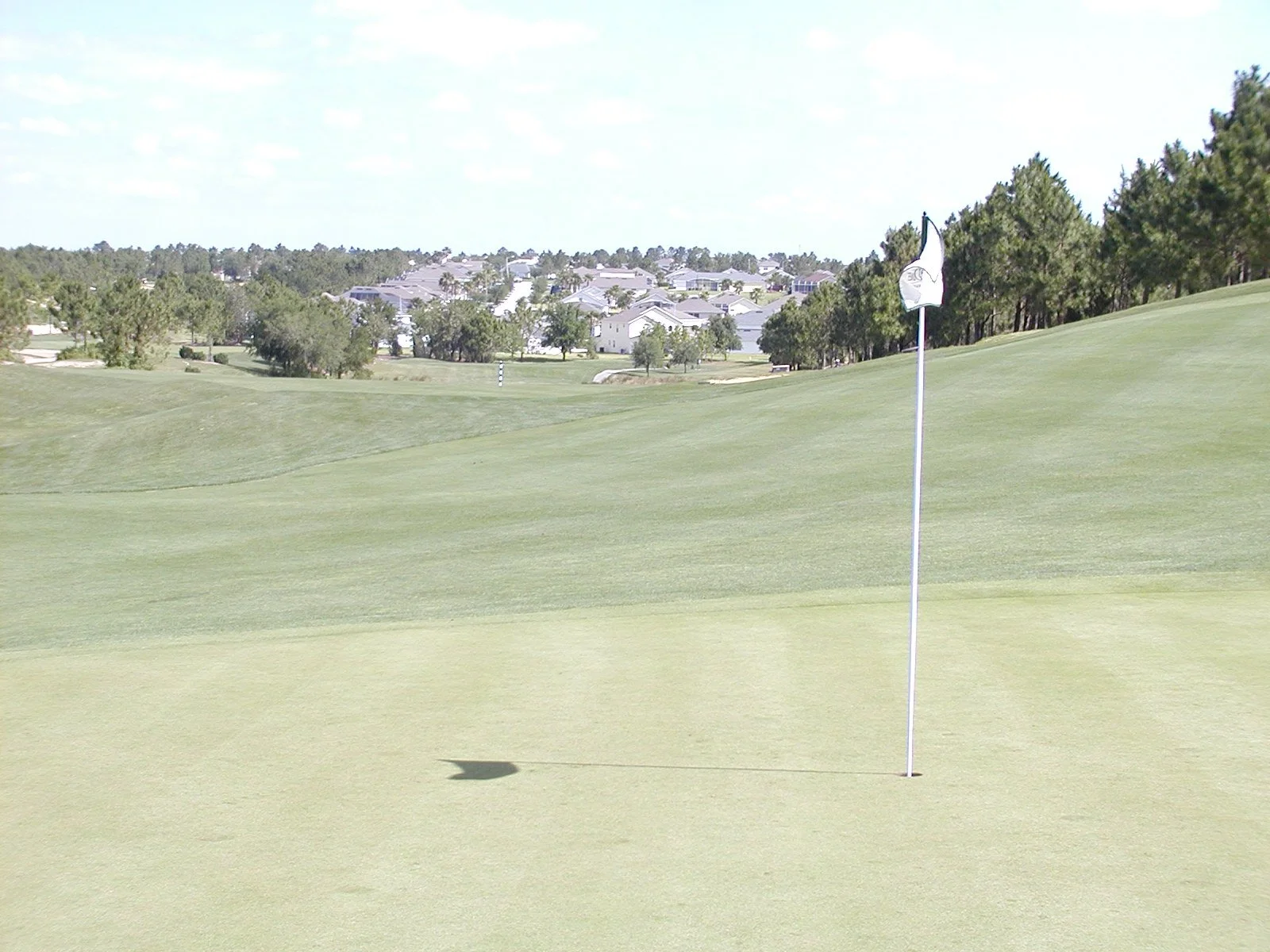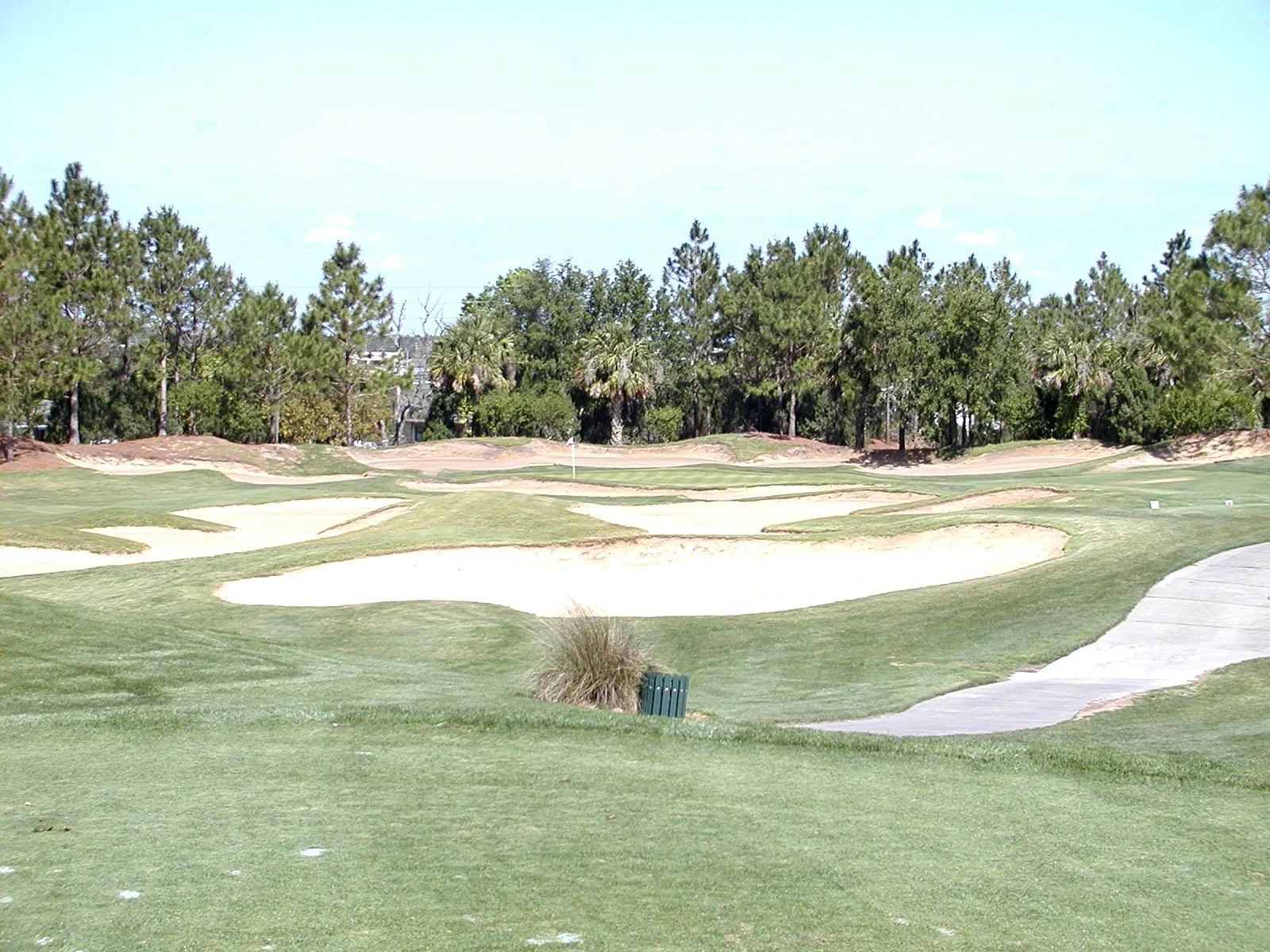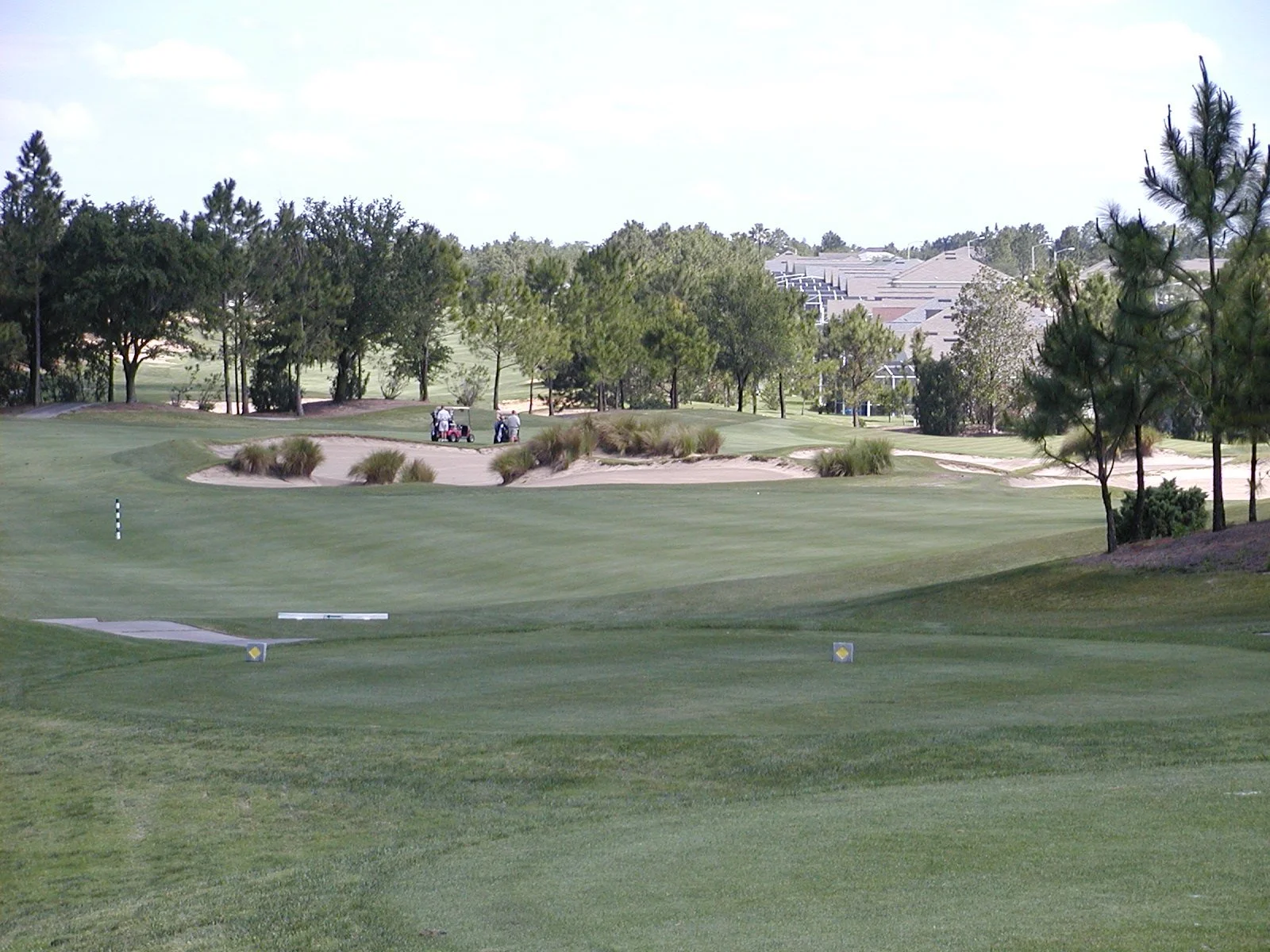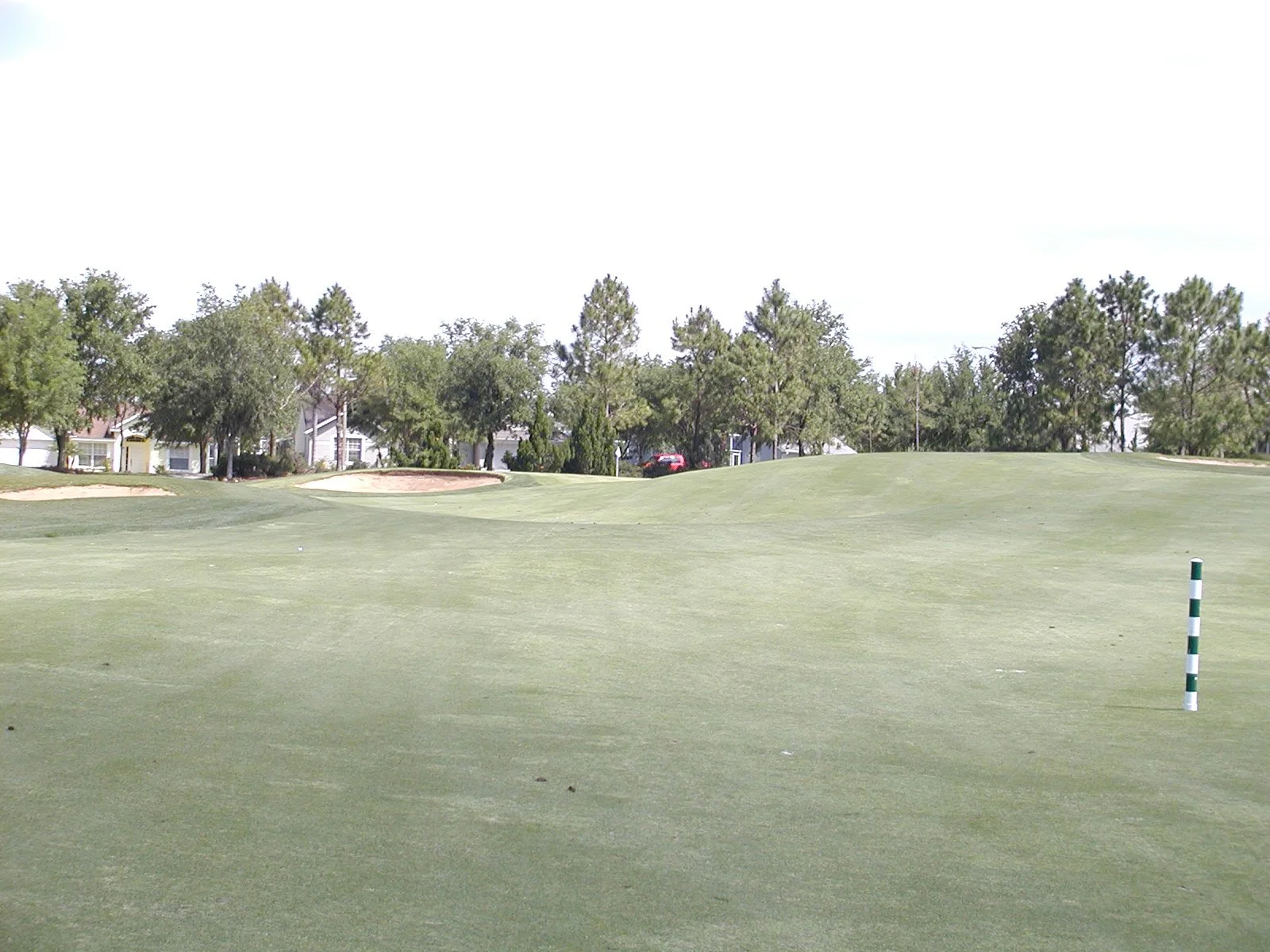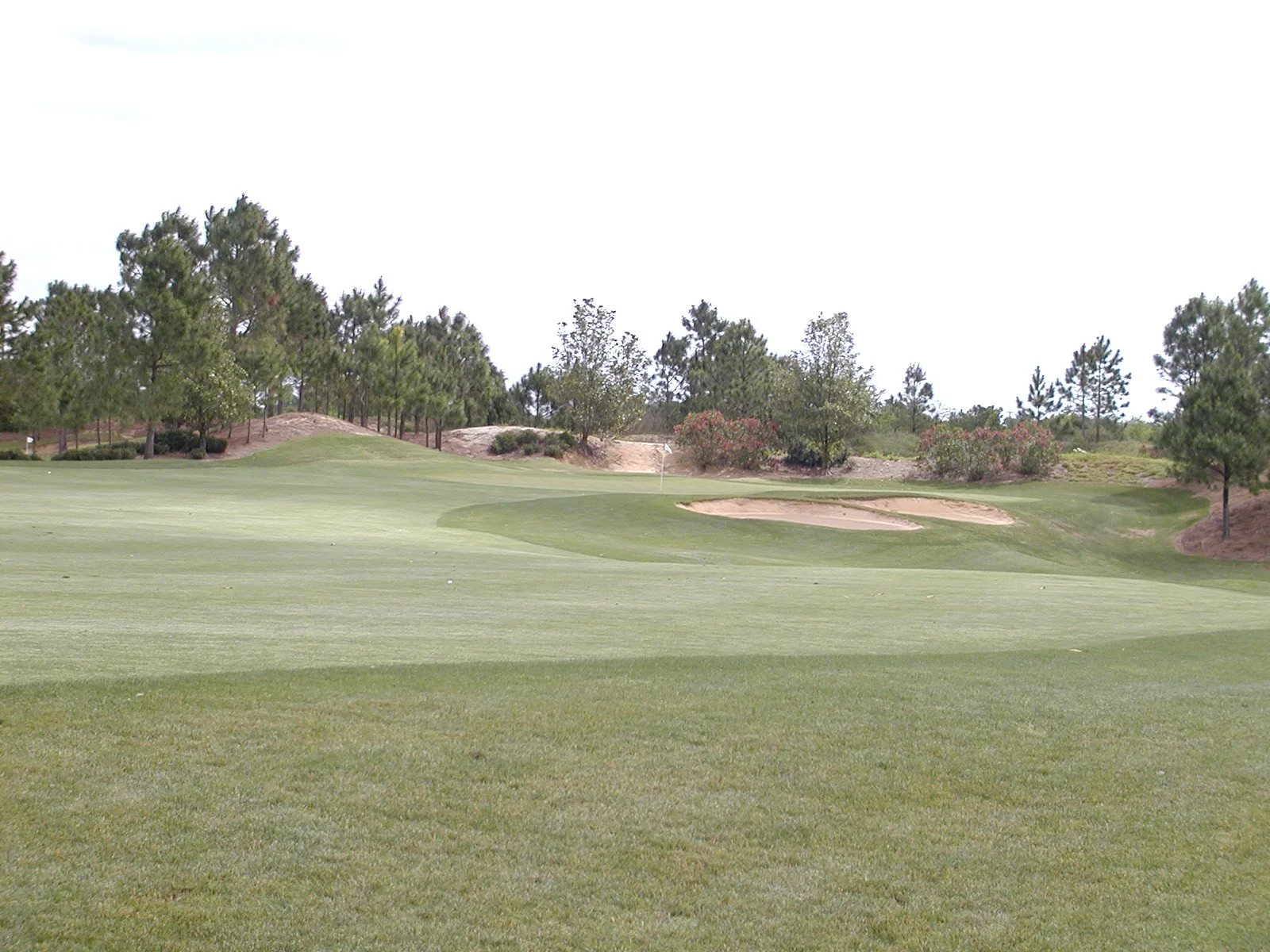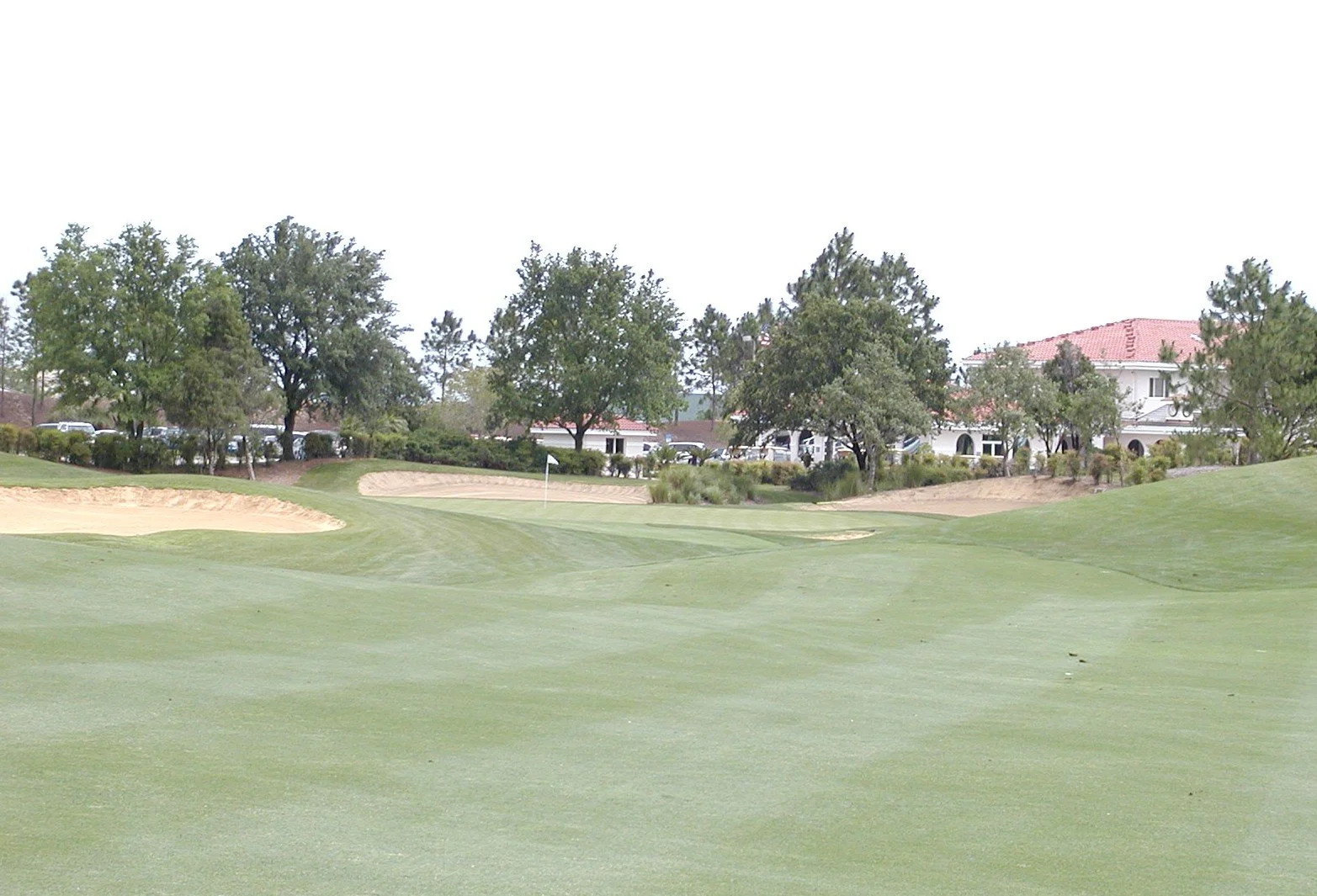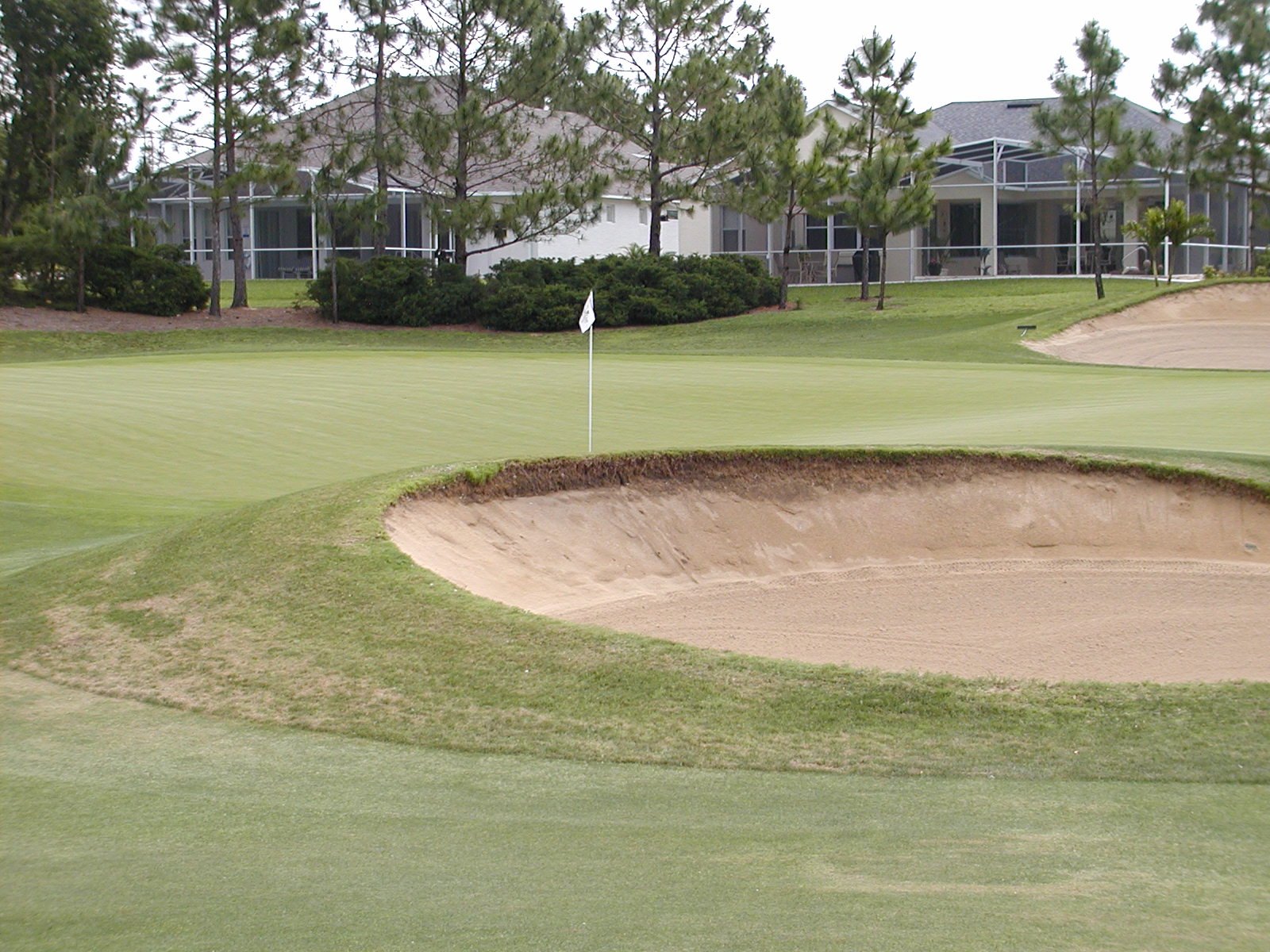SOUTHERN DUNES GOLF & COUNTRY CLUB
Course Architect: Steve Smyers
Year Opened: 1993
Location: Haines City, Florida
Slope: 135. Rating: 74.7
Par: 72
Yardage: 7,227
Hole-by-Hole: 1 - Par 4 426 Yds 10 - Par 4 471 Yds
2 - Par 4 374 Yds 11 - Par 3 216 Yds
3 - Par 3 233 Yds 12 - Par 5 551 Yds
4 - Par 5 555 Yds 13 - Par 4 461 Yds
5 - Par 4 378 Yds 14 - Par 3 167 Yds
6 - Par 3 187 Yds 15 - Par 4 369 Yds
7 - Par 4 454 Yds 16 - Par 5 548 Yds
8 - Par 4 413 Yds 17 - Par 4 421 Yds
9 - Par 5 542 Yds 18 - Par 4 461 Yds
Par 36 3,562 Yds Par 36 3,665 Yds
Awards Won: Ranked #6 by Golf Digest - Best-in-State Rankings (2007-08),
Rated 4 1/2 stars - Golf Digest's - Best Places to Play (2004),
Ranked #6 in Florida - Golfweek's - America's best courses you can play (2004),
Ranked America's best Top-40 Daily Fee Course - Golf and Travel (2001).
Website: southerndunes.com
HISTORY: Located in the heart of Florida, Southern Dunes Golf and Country Club was one of the first designs by architect Steve Smyers. From the onset, Southern Dunes has received raves reviews, including one of the top-10 courses in the state of Florida you can play by Golfweek and 4 1/2 stars by Golf Digest's, Best Places to Play. Living in Florida, one thinks of flat, non-
discript swampland. If that's the case, then you have never been to central Florida.
Southern Dunes features rolling fairways, elevation changes, contoured greens and bunkers, bunkers and more bunkers. Nearly 200 sand traps dot the layout, including 15 on the first hole alone. Despite the penchant for leaving well enough alone, Smyers moved over 400,000 cubic yards of earth in crafting Southern Dunes. "The course was designed, built and is maintained to play fast and firm," commented Smyers. "To enhance the bounce and roll of the ball, and encourage the use of the slopes and contours to advance the ball toward the hole." Mission accomplished.
REVIEW: The course starts off with a straightaway par four with a handful of bunkers down the right side and more sand on the left from 150 yards and in. Three-metal down the left side of the fairway, will leave just a short-iron to a green that slopes from the middle, to the front and to the back. A good hole to get your feet wet and make par.
The second will test your accuracy as opposed to length, as the hole measures only 374 from the black tees. Sand once again provides the main obstacle, however the landing area is quite
sufficient to accommodate a fairway-metal or long-iron off the tee to avoid the trouble. Just a wedge remains to a green protected on the right by sand and left by a grass hollow. The putting surface slopes towards the center of the green, with a back-right pin the most difficult. Fairly simple, so par is no problem and birdie is definitely in the mix.
The third is the longest par-three on the course, stretching to 233 yards. It plays slightly downhill, as the green is situated below mounds in the back and bunkers in the front and left. The putting surface is the largest on the course at 45 yards deep, so club selection will be critical.
Although the fourth is the longest par-five on the course (555 yards), the hole can be had. A wide fairway target awaits the tee ball with no trouble in site. A solid drive down the right side, can set up a chance to get home in two, however the play should be to layup down the left side. Numerous bunkers short of the green and right loom large, so play left to set up a simple pitch to an accessible surface. The green has two distinct levels, so check the depth of the pin placement and attack.
The fifth is another hole where the player must think on the tee. Seven deep bunkers dot the middle of the fairway on this 378-yard par-four. The right side of the fairway is quite wide and will set up a short-iron, while the left side will provide a short-iron and the best angle to the green. The putting surface is guarded on the right side by a pond, which comes into play if you choose the
conservative approach off the tee. The green is not as undulating as some of the others, so take advantage and stick it close.
The par-three sixth showcases some of the elevation change at Southern Dunes. From the back tee, the left side of the putting surface is partially blocked, however the trouble is not, as three bunkers flank the right side of the green and are quite visible. The green slopes from back-to-front, but is not as severe as it looks.
The seventh is the number one handicap hole on the course and an outright gem. Doglegging sharp to the left, this par-four requires a much needed draw, avoiding the numerous sand traps that flank both sides of the fairway. Your second shot with a mid- to long-iron, will play uphill to a difficult green with bunkers on both sides. A slope on the right side of the putting surface will cause chaos if your approach is off target. Mis-club on a back-right pin and a three-putt could be in store.
Not overly long, the eighth is usually played into a stiff wind and uphill. The fairway is quite large,
however the entire right side to the green is covered by sand. Depending upon pin placement, your second shot could require an extra club or two. The putting surface slopes from back-to-front, so if the pin is up, do not miss long, as you may putt the ball off the green.
The final hole on the outward nine is a solid dogleg right par-five. If the wind is not up, then its reachable in two, but your tee ball must hug the right side of the fairway to have any chance. Big surprise, you'll find a bunker that extends from the tee box down the right side of the fairway to the 170-yard mark from the green. The layup area slopes from left-to-right and plays below the putting surface, so your approach shot must be judged precisely to the uphill green. Guarded on the right by a pot bunker, the green slopes from left-to-right, however mis-club short and your shot will roll back down into the fairway. Birdie is a distinct possibility, but don't be dismayed with par.
The home nine starts off with the second most difficult hole on the course, the 471-yard, par-four 10th. A big draw will be needed, as this hole bends slightly to the left. A good tee shot will set up a mid-iron to a green protected with a pair of bunkers on both sides. The putting surface does slope from front-to-back and to the right. A tough hole to birdie or even par.
Another 200-plus par-three, the 11th is a beaute. Slightly downhill, the one-shotter has double-digit bunkers dotting the hole, but none that really come into play. The key here is club selection, as the green is broken down into three quadrants. By the way, don't miss long, as your shot will run down a steep incline, leaving you little or no chance at getting up-and-down.
A real risk-reward hole, the 12th is an outstanding par-five that bends left around a body of water. A solid drive down the left side must carry 200-plus yards of sand to reach the fairway. This will set up the best chance to go for the green in two. A definite risk, however their is plenty of opportunity to bail out right, which in turn will set up an easy pitch to one of the smaller
greens on the course. The putting surface slopes from back-to-front and right-to-left, so play below the hole to set up an easy birdie chance.
Although ranked just eighth most difficult on the course, the 13th is one of the harder holes out here. Stretching 461 yards from the back tees, the 13th plays uphill from tee to green. Left side of the fairway is key, as the right side falls off into the rough, which can lead to a blocked second shot to the green due to an area of trees. A mid- to long-iron remains to a difficult putting surface that slopes left-to-right. No bunkers surround the green, which means the real difficulty is the short grass. Miss right and long and you'll leave yourself a tough up and down.
The final one-shotter on the course is the tantalizing 14th. Just 167 yards, this hole is quite picturesque with its dozen or so bunkers surrounding the green. Although the putting surface is
only 24 paces in depth, it is quite wide from left to right, making club selection extremely important. If your tee shot lands on the front right and the pin is back-left, you might have a six-foot break on your putt due to the swale in the green.
If the wind is down on the 15th tee, then you'll have an opportunity to try and reach the green on this 369-yarder. Playing downhill, the tee shot needs to carry the fairway bunkers and then let the slope move the ball towards the putting surface. There are two other ways to play the hole. A fairway-metal short or left of the bunkers will set up a simple wedge for your second shot. But, what fun would that be. The green is relatively devoid of trouble, except for the false front, which could prove costly if you come up short in two. A good chance at getting one back.
The same could be said at the par-five 16th. At 548 yards, this straightaway hole requires just brute strength to overpower it and make birdie or eagle. A big tee shot down the left side can set up a shot at the green, but beware of the trio of fairway bunkers that will snare an overly aggressive play. A fairway-metal or long-iron will leave a simple pitch to the green or, go for broke with a
three-metal. The putting surface is quite deep at 38 yards and tricky to boot with a three-foot ravine in the center. Be careful left and right of the green, as a pot bunker awaits left and a deep traps flanks the right. Par should be your worst score on the hole.
The 17th looks simple on paper. Straightaway par-four of 421 yards and a wide fairway. However, looks can be deceiving, as they do not tell the complete story. The hole, played into the
wind can play havoc with both your tee shot and approach. The green, well, it slopes hard left-to-right and front-to-back, so depending upon pin placement, you could end up with a birdie chance or a possible bogey putt. A back-right pin will force you to play across a pair of pot bunkers guarding the second-longest green on the course.
The home hole is just a grip it and rip it off the tee dogleg right. Trees dot the right side of the fairway, so play left-center for your best approach to the green. The play is towards the left side
of the green, thus avoiding the quartet of sand traps on the right. Fairly long putting surface, so know your yardage.
OVERALL: One of the things that strikes me about Southern Dunes is its variety of short, intermediate and long holes. As they say, variety is the spice of life and that is exactly what you get.
Five sets of tee markers, ranging from 4,987 yards to 7,227 yards. Next, four distinct par-threes, each playing around a different wind pattern. The four pars range from three less than 400 yards to four over 450 yards. Even the par-fives, although all over 540 yards, leave the players with many options on how the play the hole.
There is a slight downside to Southern Dunes, there are plenty of homes surrounding the course, however, they are set back, behind trees and dunes, so unless your really house hunting, you shouldn't mind.
Just 15 minutes from the Magic Kingdom, Southern Dunes is easy to reach, although you need to ask for directions, as the course is located behind a shopping plaza and the entrance winds through the housing development that surrounds the course.
I would be remiss without telling you about the condition of the course. In a word, perfect. Tightly mown fairways, superbly cut bunkers and smooth as glass greens. And by the way, the price is right. Just $50 to a high of $110 from mid-January thru mid-April, take that Disney.
You will most certainly make a mistake if you miss playing Southern Dunes. Where should you tee it up in Orlando? Great question. Your not going to play Isleworth, Lake Nona or Bay Hill. So the answer my friend is blowing in the wind at Southern Dunes.


